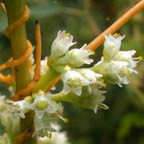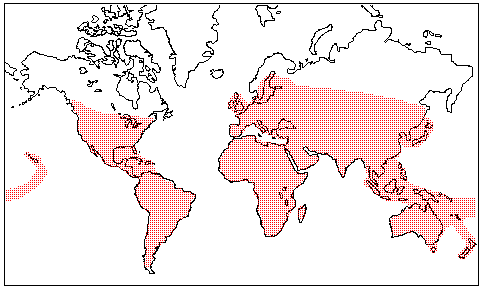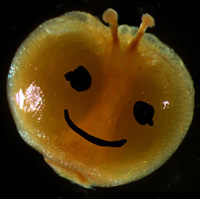
 |
Convolvulaceae Juss. (Cuscuta) |

 |
Mihai Costea at Laurier University in Ontario, Canada has constructed an amazing web called "The Digital Atlas of Cuscuta". Because dodder morphology mostly centers around minute details of the flowers, Mihai has attempted to show "the real thing" instead of line drawings (as seen in Yunker 1932). The basic morphology is shown using an image fusion methodology that creates the effect of extended depth-of-focus. Herbarium material was rehydrated and photographed with a stereomicroscope using oblique coherent contrast light. The priority has been to photograph type material from various herbaria. Hopefully this site will help "Cuscutologists" as well as those not yet past the "yellow spaghetti" and "mysterious identity" syndromes. |
Cuscuta africana
Cuscuta americana
Cuscuta angulata
Cuscuta approximata ssp. approximata
Cuscuta approximata ssp. macranthera
Cuscuta australis
Cuscuta angulata
Cuscuta babylonica
Cuscuta balansae
Cuscuta bonafortunae
Cuscuta californica
Cuscuta campestris
Cuscuta cephalanthii
Cuscuta chapalana
Cuscuta chilensis
Cuscuta chinensis
Cuscuta compacta
Cuscuta corymbosa
Cuscuta costaricensis
Cuscuta cotijana
Cuscuta cuspidata
Cuscuta epilinum
Cuscuta epithymum
Cuscuta europaea
Cuscuta exaltata
Cuscuta glomerata
Cuscuta gracillima
Cuscuta grandiflora
Cuscuta gronovii
Cuscuta indecora
Cuscuta japonica
Cuscuta legitima
Cuscuta lindsayi
Cuscuta lupuliformis
Cuscuta microstyla
Cuscuta monogyna
Cuscuta nivea
Cuscuta obtusiflora
Cuscuta odorata
Cuscuta ortegana
Cuscuta pacifica
Cuscuta palaestina
Cuscuta pedicellata
Cuscuta planiflora
Cuscuta polygonorum
Cuscuta purpurata
Cuscuta rausii
Cuscuta reflexa
Cuscuta rostrata
Cuscuta salina
Cuscuta sandwichiana
Cuscuta sidarum
Cuscuta somaliensis
Cuscuta strobilacea
Cuscuta tasmanica
Cuscuta tinctoria
Cuscuta triumvirati
Cuscuta xanthochortos
